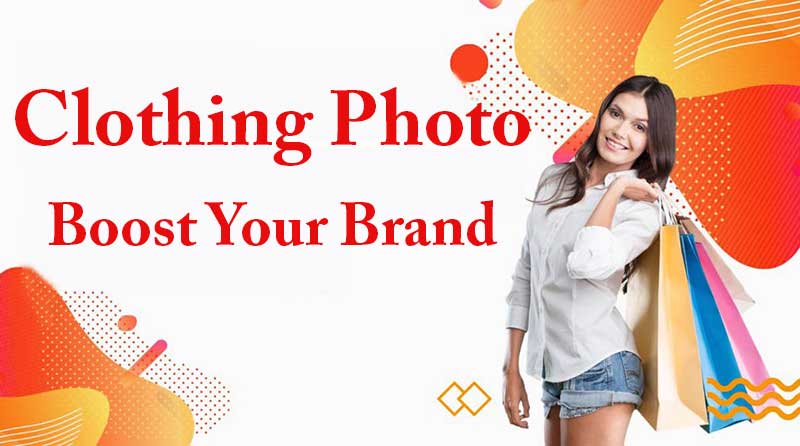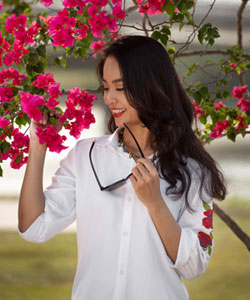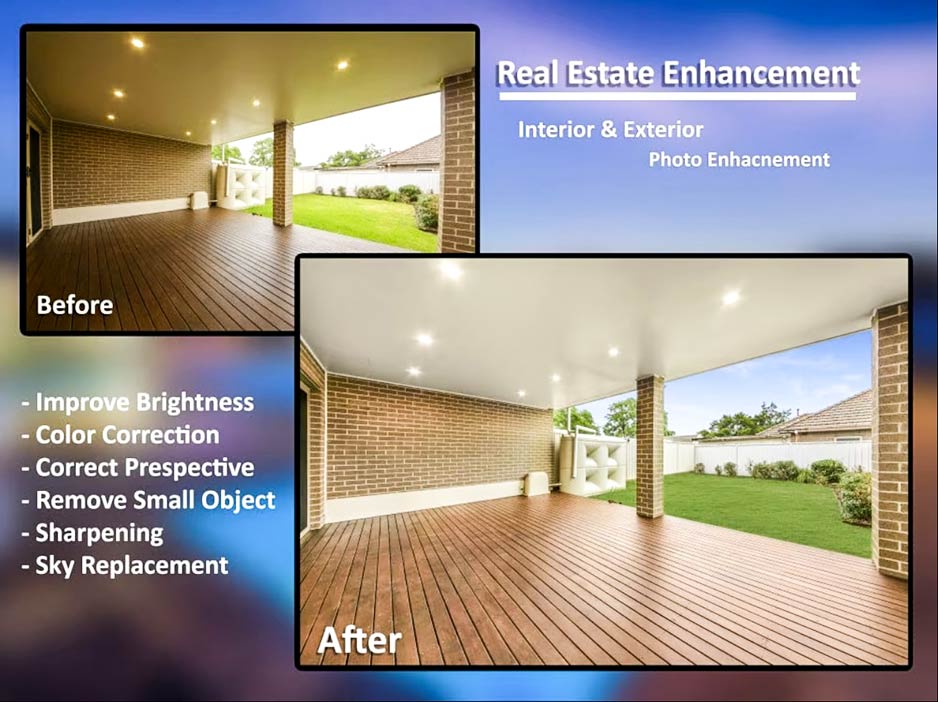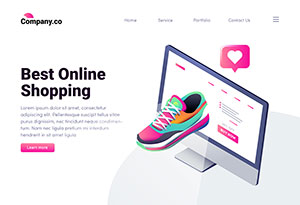
1. Introduction
In the ever-competitive fashion industry, first impressions are everything. Your brand’s visual appeal can significantly impact how potential customers perceive and engage with your products. Whether you’re showcasing the intricate details of a high-end garment or striving for a cohesive look across your marketing materials, a skilled photo editor can elevate your brand’s image to new heights. This guide will explore how leveraging expert editing techniques can not only enhance your product photography but also solidify your brand’s presence in the marketplace.
1.1 Why Image Quality Matters in Fashion
In the fiercely competitive world of fashion, image quality is more than just a detail—it’s the essence of brand identity. When customers browse through products, the first thing they notice isn’t the fabric or the fit, but the visual appeal. High-quality images have the power to captivate, convey the texture of luxurious materials, and tell a story that resonates with the target audience. In contrast, poorly edited photos can dull even the most exquisite designs, leading potential customers to click away. This is why clothing photo retouching and apparel image editing are indispensable tools for any fashion brand aiming to make a lasting impression.
1.2 The Power of a Professional Clothing Photo Editor
Enter the professional clothing photo editor, a game-changer for brands striving to stand out in a crowded market. Unlike standard editing tools, a professional editor tailors every image to align with a brand’s unique vision. From fashion photo enhancement to garment photo manipulation, the capabilities of a professional editor are vast and varied. They can perfect imperfections, highlight intricate details, and ensure consistency across all visual platforms. The result? A polished, professional image that not only showcases the product in the best light but also elevates the brand’s overall aesthetic, making it more memorable and desirable to consumers.
2. Understanding the Basics
2.1 What is a Clothing Photo Editor?
A clothing photo editor is a specialized tool designed to enhance and refine images of apparel. Unlike general photo editing software, these editors are equipped with features specifically tailored to the needs of fashion photography. This includes clothing image correction, fashion photo touch-up, and apparel picture retouching. Whether you’re working with fashion image editor software or an online clothing photo retouching service, these tools help you achieve a flawless presentation of your products, ensuring that every garment looks its best.
2.2 How Clothing Photo Editors Differ from Regular Photo Editors
What sets a clothing photo editor apart from regular photo editors is its focus on the nuances of fashion imagery. While general editors might offer broad editing capabilities, clothing photo editors are designed to address the specific challenges of photographing garments. This includes correcting the colors to match the actual fabric, smoothing out wrinkles without losing the garment’s natural drape, and enhancing details like stitching or embroidery. Moreover, these editors often come with preset options like apparel image adjustment or garment photo correction that are fine-tuned for fashion, saving time while delivering professional results.
3. The Impact on Your Brand
3.1 Elevating Brand Aesthetics
In the world of fashion, aesthetics are everything. A professional clothing photo editor can transform ordinary product images into stunning visual statements that resonate with your audience. By utilizing advanced techniques like fashion image refinement and garment photo retouching, a skilled editor can enhance the overall appeal of your clothing line. This process not only highlights the beauty of each piece but also elevates the entire brand’s perception. When your images consistently reflect high quality, your brand is perceived as premium, trustworthy, and desirable. This elevation in aesthetics can lead to increased customer loyalty and higher sales conversions.
3.2 Building a Consistent Visual Identity
Consistency is key in branding. A clothing photo editor ensures that all your images maintain a uniform look and feel, which is crucial for building a consistent visual identity. Whether it’s through clothing image adjustment or apparel picture enhancement, the goal is to create a cohesive aesthetic across all platforms. Consistency in image quality, color correction, and style reinforces your brand identity, making it instantly recognizable to your audience. This uniformity not only strengthens brand recall but also builds trust with your customers, as they come to expect a certain standard of quality from your brand.
4. Enhancing Product Photography
4.1 Highlighting Fabric Texture and Details
When selling clothing online, customers can’t touch or feel the fabric, so it’s up to the images to convey those tactile qualities. A clothing photo editor can highlight the intricate details of your garments, from the texture of the fabric to the craftsmanship of the stitching. By focusing on these elements, the editor ensures that the product images tell a story of quality and attention to detail. Techniques such as fashion photo enhancement and garment image refinement are employed to bring out the best in every piece, making the clothing appear more luxurious and appealing to potential buyers.
4.2 Correcting Color Discrepancies for Accurate Representation
One of the biggest challenges in fashion photography is ensuring that the colors in the photos match the actual garments. A clothing photo editor uses tools like clothing image correction and apparel image adjustment to correct any color discrepancies. Accurate color representation is crucial for maintaining customer satisfaction, as it prevents returns and builds trust in your brand. By using these editing techniques, you can be confident that what customers see online is what they’ll receive in real life, leading to higher conversion rates and fewer complaints.
4.3 Removing Unwanted Backgrounds
A cluttered or distracting background can detract from the clothing being showcased. A professional clothing photo editor can remove unwanted backgrounds, allowing the product to be the star of the show. Whether it’s through garment photo manipulation or apparel picture retouching, the editor can isolate the garment and place it against a clean, neutral background that enhances its appeal. This technique is particularly useful for e-commerce platforms, where a consistent, uncluttered presentation is key to driving sales. By focusing solely on the clothing, the editor ensures that the product is presented in the best possible light, making it more likely to catch the eye of potential customers.
5. Creating Engaging Marketing Campaigns
5.1 Designing Eye-Catching Lookbooks
Lookbooks are an essential marketing tool in the fashion industry, showcasing the latest collections in a visually appealing format. A clothing photo editor plays a crucial role in designing eye-catching lookbooks by ensuring that every image is polished to perfection. Techniques like fashion photo touch-up and apparel image touch-up are used to create a cohesive and captivating narrative that highlights the brand’s aesthetic. These lookbooks not only serve as a showcase for your products but also as a visual representation of your brand’s identity, making them a powerful tool for marketing and sales.
5.2 Crafting Social Media Ready Images
Social media is a visual platform where first impressions matter. A clothing photo editor can craft social media ready images that are tailored to the specific needs of platforms like Instagram and Facebook. By using clothing image manipulation and fashion picture editor tools, the editor can create images that are not only high-quality but also engaging and shareable. These images are designed to capture attention quickly, encouraging likes, shares, and ultimately, driving traffic to your website or online store.
5.3 Optimizing Photos for E-commerce Platforms
E-commerce platforms require images that not only look good but also load quickly and meet specific technical requirements. A clothing photo editor can optimize photos for these platforms by using techniques like clothing photo adjustment and apparel image editor tools. This optimization includes resizing images, adjusting file formats, and ensuring that the photos are aligned with the platform’s guidelines. By doing so, the editor ensures that your products are presented in the best possible light, leading to higher visibility and increased sales.
6. Streamlining Your Workflow
6.1 Batch Editing for Efficiency
In the fast-paced world of fashion, time is of the essence. Batch editing is a feature that can significantly streamline your workflow by allowing you to edit multiple images simultaneously. With tools like clothing photo retouching and apparel image editing, you can apply the same adjustments to a large set of photos, ensuring consistency across your entire collection. This not only saves time but also reduces the margin for error, as each image is treated with the same level of precision. Whether you’re adjusting colors, cropping, or retouching, batch editing makes the process more efficient, enabling you to meet tight deadlines without sacrificing quality.
6.2 Automated Features that Save Time
Automation is a game-changer in photo editing, offering tools that can perform complex tasks with minimal manual input. Automated features such as clothing image correction and fashion photo enhancement allow you to quickly address common issues like color discrepancies, lighting imbalances, and background distractions. These features are particularly useful when dealing with large volumes of images, as they can execute repetitive tasks in a fraction of the time it would take to do them manually. By leveraging automation, you can focus on the creative aspects of editing, knowing that the routine tasks are handled efficiently and accurately.
6.3 Custom Presets for Brand Consistency
Maintaining a consistent visual identity across all your images is crucial for brand recognition. Custom presets are an invaluable tool for achieving this consistency. By creating presets tailored to your brand’s aesthetic, you can ensure that every image, whether edited by you or a team member, has the same look and feel. These presets can include adjustments for color tones, exposure, and sharpness, all designed to align with your brand’s visual guidelines. Using custom presets not only saves time but also guarantees that your brand’s imagery is uniform across all platforms, from social media to e-commerce sites.
7. Choosing the Right Clothing Photo Editor
7.1 Key Features to Look For
When selecting a clothing photo editor, it’s important to consider the features that will best meet your needs. Look for tools that offer garment photo manipulation, clothing image adjustment, and fashion photo correction to handle the specifics of fashion photography. Additionally, ensure the software provides batch editing capabilities and supports custom presets to enhance your workflow. The editor should also include advanced features like background removal and color correction to address the unique challenges of photographing apparel. Ease of use, compatibility with your existing software, and access to a wide range of editing tools are other factors to consider when making your choice.
7.2 Comparing Top Clothing Photo Editors on the Market
The market is filled with a variety of clothing photo editors, each offering different strengths. Some of the top choices include Adobe Photoshop, known for its comprehensive editing tools and customizability; Affinity Photo, which provides professional-grade features at a more affordable price; and Canva, which is user-friendly and ideal for quick edits and social media content. Additionally, Fotor and GIMP offer robust editing capabilities for those who need fashion photo editor online options. When comparing these editors, consider factors such as price, ease of use, available features, and how well they integrate with your current workflow.
8. Advanced Editing Techniques
8.1 Retouching to Perfect Every Garment
Retouching is essential for making every garment look flawless in photos. This technique involves meticulous adjustments to remove imperfections, such as wrinkles, blemishes, or stray threads, ensuring that the clothing looks pristine. Tools like clothing image retouching and garment photo correction are used to achieve a polished look, enhancing the overall quality of the image. Retouching can also include smoothing out the fabric texture, enhancing the fit, and even adjusting the shape of the garment to ensure it looks its best from every angle.
8.2 Enhancing Lighting and Shadows for Dramatic Effect
Lighting can make or break a photo, especially in fashion photography. Enhancing lighting and shadows is a technique that can add depth and drama to your images, making the clothing appear more dynamic and appealing. By adjusting the light balance, you can highlight key features of the garment, such as its texture or color, while shadows can be manipulated to create a sense of dimension. Fashion image refinement tools allow you to fine-tune these elements, ensuring that your images have the right balance of light and shadow to captivate your audience.
8.3 Using Filters to Create a Signature Look
Filters are a powerful tool for creating a signature look that can set your brand apart from the competition. By applying specific filters, you can give your images a unique style that reflects your brand’s identity. Whether you’re going for a vintage vibe, a high-fashion gloss, or a natural, minimalist aesthetic, filters can help you achieve that look consistently across all your images. Tools like fashion picture editor and clothing photo editor for Instagram often include a variety of filters that can be customized to suit your brand’s needs. By incorporating these filters into your editing process, you can create a cohesive visual style that strengthens your brand’s image and makes it instantly recognizable.
9. Real-Life Case Studies
9.1 How Top Fashion Brands Use Photo Editors to Boost Their Image
Top fashion brands understand the power of impeccable imagery in defining their identity and connecting with their audience. Brands like Gucci and Zara leverage professional clothing photo editors to meticulously curate their visual content, ensuring that every image aligns with their brand ethos. By using techniques like fashion image refinement and apparel image enhancement, these brands elevate their visual presentation, making their collections not just products, but aspirational lifestyle statements. This strategic use of photo editing has helped them maintain a consistent, high-end image, reinforcing their position at the forefront of the fashion industry.
9.2 Transformations: Before and After Clothing Photo Editing
The impact of clothing photo editing is best seen in transformation stories. Imagine a raw, unedited photo where the lighting is flat, the colors are off, and the background is cluttered. After applying garment photo manipulation and fashion photo enhancement techniques, the same image can be transformed into a stunning visual that not only highlights the garment’s quality but also captures the brand’s essence. These before-and-after transformations illustrate how powerful editing tools can turn ordinary photos into compelling marketing assets, making the difference between a product that gets overlooked and one that stands out.
10. DIY vs. Professional Services
10.1 When to Edit Photos In-House
Editing photos in-house can be a cost-effective solution, especially for startups and small brands. It allows for greater control over the creative process and can be a good option when dealing with a smaller volume of images. In-house editing is suitable when you have the necessary skills and tools, such as clothing image editor software or fashion photo editor online platforms. However, it’s important to assess whether your team has the expertise to handle complex edits like clothing image manipulation or if they can maintain the consistency needed across all your visual content.
10.2 Benefits of Hiring a Professional Clothing Photo Editor
Hiring a professional clothing photo editor offers several advantages, particularly for brands aiming for a polished and cohesive visual identity. Professionals bring a high level of expertise and can handle advanced editing tasks such as garment photo retouching and apparel image correction with precision. They also save time, allowing you to focus on other aspects of your business. Additionally, professional editors are well-versed in industry standards, ensuring that your images meet the requirements for various platforms, whether it’s e-commerce, social media, or print. The investment in professional services often results in higher-quality images that can enhance your brand’s appeal and drive better sales outcomes.
11. Cost-Effective Solutions
11.1 Affordable Tools for Startups and Small Brands
For startups and small brands, budget constraints often dictate the choice of tools. Fortunately, there are several affordable clothing photo editing solutions available that don’t compromise on quality. Software like GIMP and Canva offer robust editing features at little to no cost, making them ideal for brands just starting out. These tools provide essential functions like clothing photo retouching and fashion image enhancement, enabling small businesses to produce professional-looking images without breaking the bank. Investing in these cost-effective tools allows brands to maintain a competitive edge while keeping expenses in check.
11.2 Maximizing Your ROI with High-Quality Photos
Investing in high-quality photos is one of the most effective ways to maximize your return on investment (ROI). Quality images not only attract more customers but also increase the likelihood of sales conversions. By using tools like clothing image enhancement and apparel picture retouching, brands can present their products in the best possible light, which can lead to higher customer satisfaction and lower return rates. High-quality photos also enhance your brand’s credibility, making customers more likely to trust your products and make repeat purchases. In the long run, the investment in professional photo editing pays off through increased sales and a stronger brand reputation.
12. Common Mistakes to Avoid
12.1 Over-Editing: When Less is More
One of the most common mistakes in photo editing is over-editing. While it can be tempting to use every tool at your disposal, sometimes less is more. Over-editing can result in images that look unnatural or too perfect, which can be off-putting to customers. Techniques like fashion photo correction and clothing image adjustment should be used with a light touch to enhance the garment’s natural beauty without altering its true appearance. It’s important to strike a balance between making the product look its best and maintaining a realistic representation.
12.2 Ignoring the Importance of File Formats
Another frequent mistake is overlooking the importance of file formats. The wrong file format can lead to issues with image quality, loading times, and compatibility across different platforms. For example, using JPEGs for e-commerce images might be suitable for web use due to their smaller size, but they can lose quality when compressed. On the other hand, PNGs offer better quality but can result in larger file sizes. It’s crucial to understand when to use each format to ensure your images maintain their quality and are optimized for their intended use. Ensuring that your clothing photo editor exports images in the correct file format will help you avoid potential pitfalls that could negatively impact your brand’s online presence.
13. Future Trends in Clothing Photo Editing
13.1 The Rise of AI in Photo Editing
The future of clothing photo editing is being shaped by the rapid advancement of artificial intelligence (AI). AI-driven tools are revolutionizing the way images are edited, making processes faster, more intuitive, and increasingly sophisticated. With AI, tasks like clothing image retouching and fashion photo enhancement can be automated, allowing for real-time adjustments that maintain high levels of quality. AI algorithms are also becoming more adept at recognizing fabric types, textures, and patterns, enabling more precise edits that enhance the natural look of garments. As AI technology continues to evolve, it’s likely to become an indispensable part of the photo editing toolkit, offering unprecedented levels of efficiency and creativity.
13.2 Predicting the Next Big Thing in Fashion Photography
Looking ahead, the next big trend in fashion photography is likely to involve a deeper integration of virtual and augmented reality (VR/AR). These technologies have the potential to transform how fashion brands showcase their products, creating immersive experiences that allow customers to “try on” clothing digitally. Additionally, 3D photo editing is expected to gain traction, enabling the creation of hyper-realistic images that provide a more comprehensive view of garments from every angle. As these technologies mature, they will open up new possibilities for creative expression in fashion photography, offering brands innovative ways to connect with their audience and stand out in a crowded market.
14. Tips for Beginners
14.1 Getting Started with Basic Edits
For beginners looking to dive into clothing photo editing, starting with basic edits is the best approach. Focus on mastering fundamental techniques such as color correction, clothing image adjustment, and background removal. These skills are essential for making your photos look polished and professional. Begin by experimenting with free or low-cost tools like Canva or GIMP, which offer user-friendly interfaces and plenty of online tutorials to help you learn the ropes. As you become more comfortable with these basics, you can gradually explore more advanced features and techniques.
14.2 Resources for Learning More
There are numerous resources available for those who want to deepen their knowledge of fashion photo editing. Online platforms like YouTube, Udemy, and Skillshare offer comprehensive courses that cover everything from basic editing techniques to advanced retouching skills. Websites like Phlearn and CreativeLive provide tutorials specifically geared toward fashion photography and editing, offering insights from industry professionals. Additionally, following blogs and forums related to fashion photo enhancement can keep you updated on the latest trends and tools. Investing time in these resources will help you build a strong foundation and stay ahead in the ever-evolving world of photo editing.
15. Conclusion
15.1 Recap: How a Clothing Photo Editor Can Boost Your Brand
In today’s highly visual market, the quality of your product images can make or break your brand. A professional clothing photo editor not only enhances the aesthetic appeal of your images but also ensures consistency across all your visual content. By employing techniques such as garment photo manipulation and fashion image refinement, you can create stunning images that resonate with your target audience and strengthen your brand identity. Whether you’re focusing on e-commerce, social media, or print, high-quality images are a powerful tool for boosting your brand’s presence and credibility.
15.2 Final Thoughts: Investing in Your Brand’s Visual Appeal
Investing in a professional clothing photo editor is more than just a financial decision—it’s a strategic move that can significantly impact your brand’s success. In a world where consumers are bombarded with visual content, having polished, high-quality images is essential for standing out. By prioritizing the visual appeal of your products, you’re not only enhancing their perceived value but also building a stronger connection with your audience. As the digital landscape continues to evolve, staying ahead with cutting-edge photo editing techniques will ensure that your brand remains competitive, relevant, and memorable.
How We Helped an E-commerce Brand Increase Sales by 35% with Professional Retouching
When it comes to e-commerce, first impressions are crucial. A shopper’s decision to click “Add…
How to Use Ghost Mannequin Photography to Showcase Your Apparel Products
Empowering Success TogetherHow to Use Ghost Mannequin Photography to Showcase Your Apparel ProductsWe provide comprehensive…
Spring Fashion 2025: The Hottest Colors to Wear
Empowering Success TogetherSpring Fashion 2025: The Hottest Colors to WearWe provide comprehensive solutions and support…
Real Estate Photo Remote Editing: The Ultimate Guide to Enhancing Property Images
Empowering Success TogetherReal Estate Photo Remote Editing: The Ultimate Guide to Enhancing Property ImagesWe provide…
DIY vs Professional Ecommerce Photo Editing: Which is Right for You?
Empowering Success TogetherDIY vs. Professional Ecommerce Photo Editing: Which is Right for You?We provide comprehensive…
The Best Impact of White Backgrounds on Ecommerce Product Photography
Empowering Success TogetherThe Best Impact of White Backgrounds on Ecommerce Product PhotographyWe provide comprehensive solutions…






